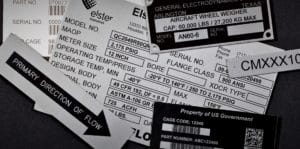During a fire emergency, you need to depend on your fire extinguisher to work without issue. Smoke alarms and fire extinguishers require maintenance to make sure they work if there is smoke or fire.
You regularly replace batteries in your smoke alarms and test them to confirm they’re in good working order. With a fire extinguisher, it’s critical to keep up with regular inspections to make sure it’s ready to help subdue a fire in an emergency.
Have you seen the metal tags on fire extinguishers? They tell you about the condition of your extinguisher. Here’s a little more about the importance of fire extinguisher tags.
What’s On the Tag?
Commercial buildings and businesses must follow regulations for a specific number of extinguishers in the building and the location of each extinguisher. Building owners must also follow federally mandated rules for extinguisher inspections.
A fire extinguisher’s tag is a visual record of its shelf life. It contains critical information about regular inspections performed by a professional with a fire extinguisher inspection certification. Each tag can include:
- The fire extinguisher’s number (for record-keeping)
- Information about the type of extinguisher
- The inspecting company’s name
- Date of each inspection
- The ID of the inspector (usual the inspector’s initials)
Using a metal tag helps preserve the most critical lifetime information for your extinguisher.
Why Do Inspections Matter?
If you’ve ever used an old can of shaving cream, you might push the button, and nothing happens—even if the can is full.
Fire extinguishers can go “bad” or stop working. Like a can of shaving cream, the contents of an extinguisher are under pressure. At the first sign of a fire, you need to know your extinguisher will work as designed when you press that button.
OSHA requires regular inspections (and documentation of those inspections) for every workplace. The tags on each canister help you keep track of those inspections, so you have confidence in your extinguishers if you need them.
Your tags need to record:
- Monthly visual inspections
- Annual maintenance
- Six-year maintenance for dry chemical extinguishers
Make sure your extinguishers stay up to date for all inspections and documentation. During an inspection, the canister’s tags offer quick reference about its condition.
Why Use a Metal Tag?
While paper tags give you space for more detailed information, metal tags can record confirmation of the monthly inspections plus the canister’s identifying information. Most extinguishers have a combination of paper and metal tags for thorough documentation.

Your fire extinguishers need a durable tag to stick around for the life of the canister. Metal tags offer that durability to make it through regular inspections and maintenance. Paper tags can become detached from the canister while a metal tag attaches to the canister for the long haul.
Wrap-Up
During inspections, fire extinguishers get handled, bumped, and tested. Metal fire extinguisher tags withstand every inspection and last for the lifetime of each canister. Fire hydrants are also important to properly mark and identify.
Check out our selection of metal tags for your extinguishers, then contact us for a quote!